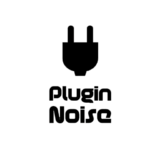If you are bored with dull virtual piano sounds, I welcome you to the showcase of my best piano plugins and Kontakt libraries!
Let’s face it, stock piano sounds rarely cut it. Doesn’t matter if you’re chasing that smoky jazz bar tone, a cinematic felt piano, or a massive grand with concert hall reverb, there’s no one-size-fits-all when it comes to piano plugins.
Trust me, I’ve spent way too many hours poking through Kontakt folders looking for the one… only to end up spiraling into a YouTube black hole of demo videos.
That’s why I put together this handpicked list of the best piano VSTs and Kontakt libraries out there. Whether you’re composing for film, producing pop ballads, or laying down MIDI ideas that actually feel like a real piano, this list has something for your setup.
From sampled grands to physically modeled marvels and even some that blend both, these picks are buttery, playable, and full of character.
So grab your sustain pedal and let’s get into the good stuff!
1. IK Multimedia Pianoverse
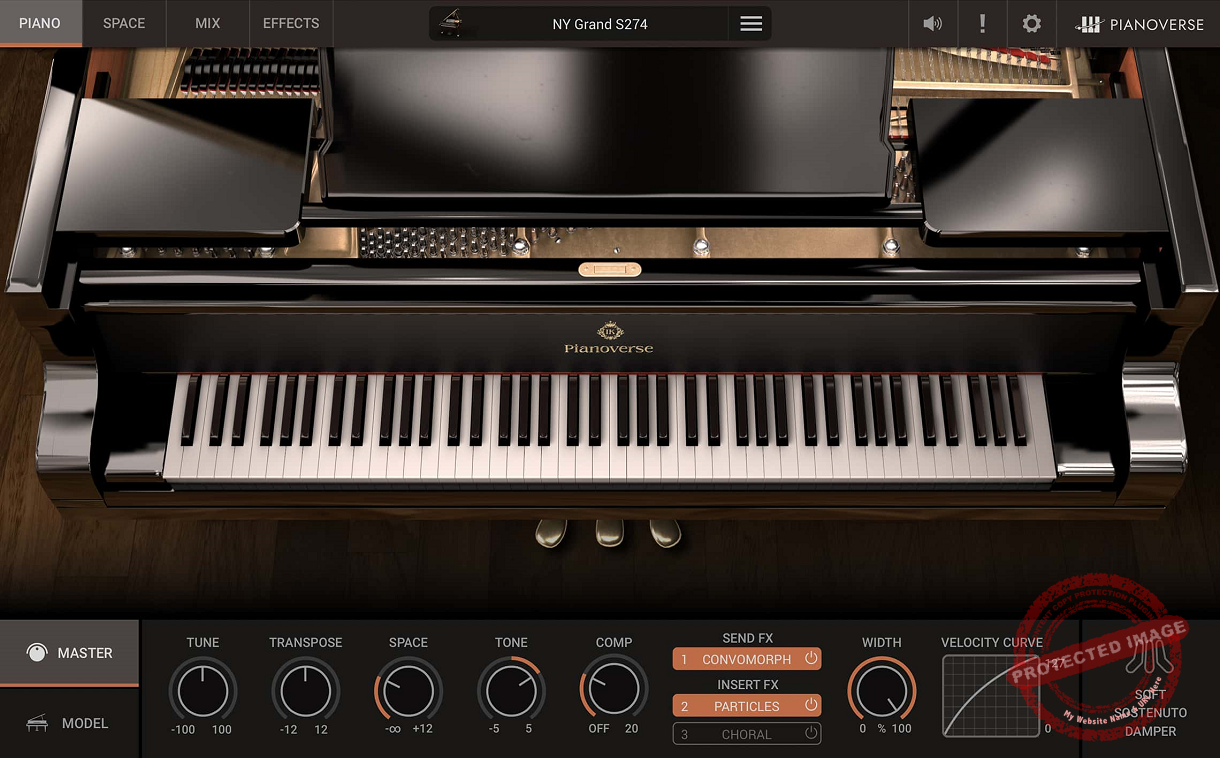
My first pick, Pianoverse, caught my ear not just with the realism, but with its range.
Pianoverse doesn’t just give you pristine grand piano tones; it lets you warp them into cinematic textures, ambient dreamscapes, or totally surreal soundbeds. I’ve never seen a piano plugin lean this far into creativity and authenticity at the same time.
The fact that it uses robot-assisted sampling to capture every nuance is pretty great, and yeah, I kinda love that ridiculous detail.
The interface is clean, modern, and fun to explore. I found it easy to bounce between natural piano tones and heavily designed presets thanks to a slick filtering system.
You can sort sounds by mood, genre, style, and timbre, which sounds gimmicky until you’re browsing presets labeled Melancholic, Angry, or Synthwave and realizing… yeah, these all actually feel right.
The layout’s logical, but there’s a lot going on, so expect a short learning curve if you want to dive into its deeper effects engine.
- Robot-Assisted Sampling
IK used robotic hands to simulate human playing and recorded with surgical precision. I’m not joking and this is not marketing fluf.f.
You can hear the detail in soft passages, pedal response, and the sense of space between notes. I’ve used it in intimate ballads, and it just breathes with realism.
- Mood/Genre-Based Presets
What I enjoy most is browsing by vibe: sometimes I don’t know what kind of piano I want, so I just know I want something moody, or lo-fi, or aggressive.
Being able to filter sounds this way keeps my creative momentum going, especially when I’m scoring or producing cinematic tracks.
- Built-In Spaces and Effects
This is where Pianoverse goes fully off the deep end. The Space tab lets you drop your piano into places like “Iceberg” or “Desert Wind,” and it’s not subtle.
Combine that with Convomorph, Reelab, and other effect units, and you’ve basically got a sound designer’s playground tucked into a piano plugin.
Load times for presets are a bit of a drag, especially when I’m just trying to flip through sounds quickly. And while the subscription model might be cool for some, I personally think buying the pianos you want is the smarter move unless you’re a full-blown piano nerd.
Honestly, this one’s for producers who want more than just a clean grand piano. It’s for scoring, for ambient, for left-field pop… or even just layering textures beneath a dry upright.
Pianoverse comes in VST, AU, and AAX formats for macOS and Windows users.
2. Native Instruments Claire
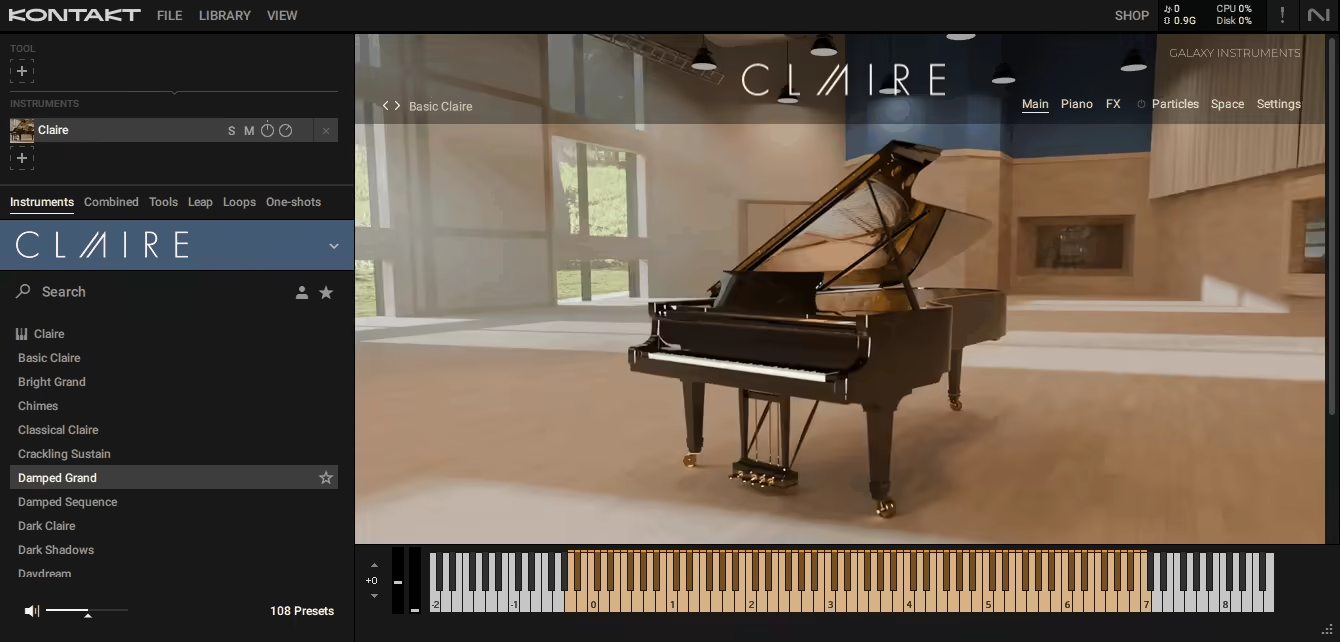
If you’re looking for a piano that sounds honest, Claire might be your best bet.
Claire is not trying to be cinematic or nostalgic or quirky, it’s just a beautifully sampled Fazioli F308, full of clarity, rich harmonics, and a seriously expressive dynamic range.
I’ve used a ton of grand piano libraries, but Claire instantly stood out to me for how responsive it feels under my fingers. There’s no mud, no weird EQ carving needed; just clean, emotional tone from top to bottom.
The interface is a breeze. I jumped in and had usable sounds dialed in within minutes. You can blend close, mid, and room mics, adjust mechanical and pedal noise, shape reverb, tweak color and dynamics, it’s all laid out cleanly, and nothing feels buried.
Everything responds in real time, and the Kontakt interface makes it easy to map parameters to a MIDI controller. This one doesn’t get in your way, it just makes playing fun again.
- Fourth Pedal Functionality
This tiny detail blew me away. The Fazioli’s fourth pedal reduces hammer velocity without dulling the tone, and Claire includes this, which gives you extra expressive control, especially for delicate, emotional playing. I’ve leaned on it for scoring quiet scenes and subtle intros.
- Particles Engine for Texture & Motion
This isn’t just a gimmick carried over from Noire, it’s a powerful tool for creating movement. When I want to push a basic piano phrase into an ambient or experimental zone, the Particles Engine turns single notes into textured, rhythmic ripples. It’s been amazing for layering under strings or pads.
- Blendable Mic Positions & Authentic Details
Being able to mix between close and room mics lets me tailor the vibe for anything from tight pop hooks to cinematic reverbs.
Add in control over mechanical noise, pedal action, and even color/richness, and you’ve got a fully sculptable instrument that still feels very real.
Claire’s sound leans bright and clear, so if you’re into darker, moodier tones like Noire, you might still prefer that for certain projects. Also, while the library is deep, it’s less about creative FX and more about precision, nuance, and that stunning Fazioli tone.
I keep reaching for Claire when I need a piano that feels honest, intimate, and full of character without sounding overly processed. It shines in pop, solo piano work, and anything where clarity and emotion are the focus.
Claire comes in Kontakt format for macOS and Windows users.
3. Arturia Piano V3
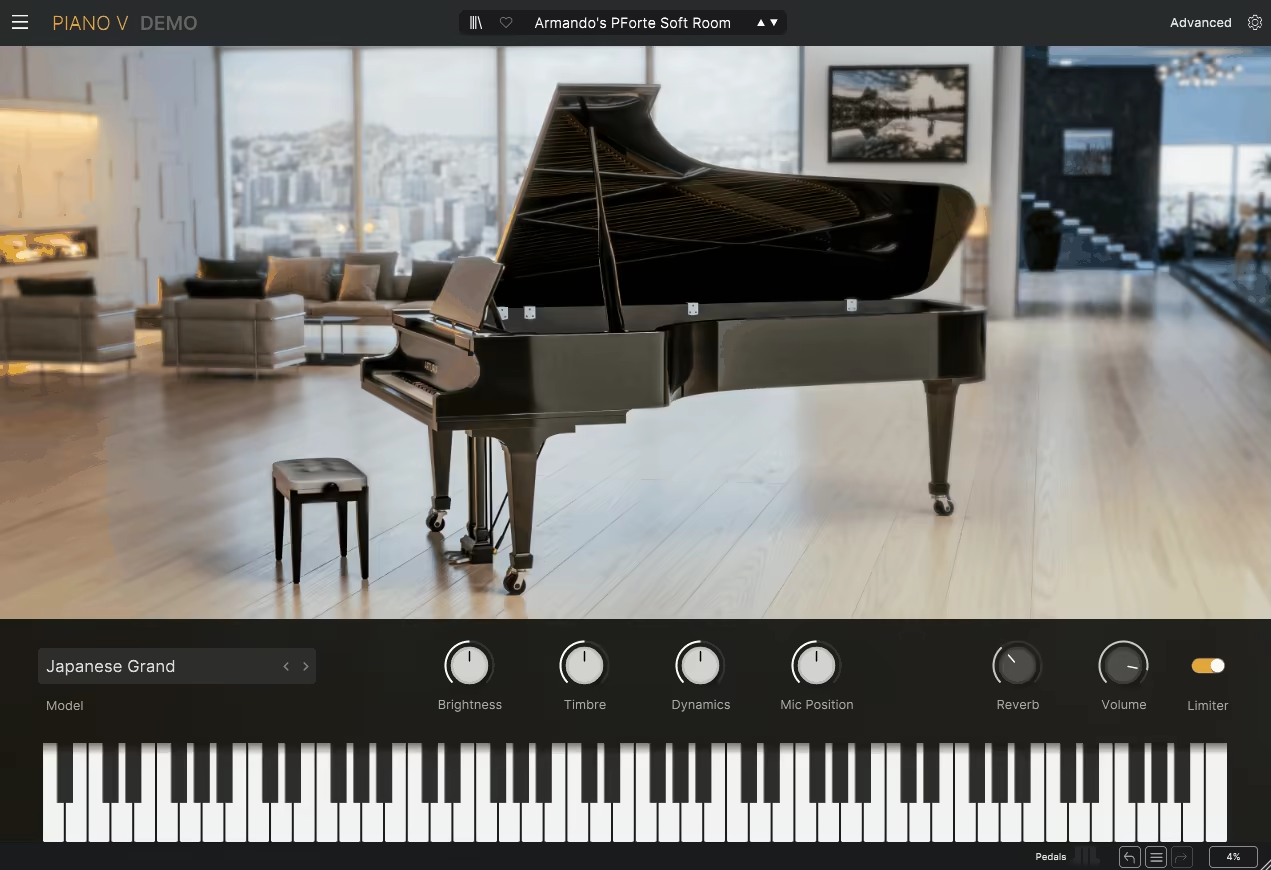
Most piano plugins give you a snapshot of an instrument. Piano V3 hands you the whole instrument and says, “Here, build it yourself.”
With Piano V3, you’re not stuck with a single tone or style. One minute, I’m playing a pristine jazz grand; the next, I’ve detuned a saloon upright and added enough hammer noise to scare a technician. It’s a shapeshifter, and that’s what makes it exciting.
At surface level, it’s plug-and-play, polished interface, quick preset browsing, and a good handful of default tones that sound ok right out of the gate. But click a little deeper, and you’re practically backstage with the piano’s guts laid out in front of you.
- 12 Physically Modeled Piano Types
Instead of dragging around gigabytes of samples, this thing creates sound on the fly using real-world physics.
You get everything from a metallic grand to a tack upright, and even a glass piano that somehow manages to sound weirdly emotional. I’ve thrown all of them into tracks at this point and no two feel the same. But, I gotta say most need a bit of tweaking to sound good.
- Customizable Mechanics & String Behavior
There’s a whole “inside the piano” section where you can reshape the instrument’s behavior. Shift the hammer position, tweak unison string detuning, crank up pedal clunks, or dial in that classic stretch tuning upright pianos have. It’s not just for realism, it’s for personality.
- Room & Mic Designer
Rather than slapping on a reverb and calling it a day, Piano V3 gives you 14 convolution spaces and a multi-mic mixer.
Need to throw your upright into a dark stairwell or maybe spread a concert grand across a lush scoring hall? Done. It’s like bringing a studio with you into your DAW.
Also, a few of the brighter grands felt overly polished for raw indie material, and if you’re after a gritty felt piano vibe, there’s a bit of coaxing involved.
This is what I reach for when a “normal” piano won’t cut it. When I want to shape tone like clay, bend realism just slightly, or design something that hints at a piano without being limited by one.
Piano V3 comes in VST2.4, VST3, AU, AAX, and NKS formats for macOS and Windows users.
4. Sonuscore Chroma Grand Piano
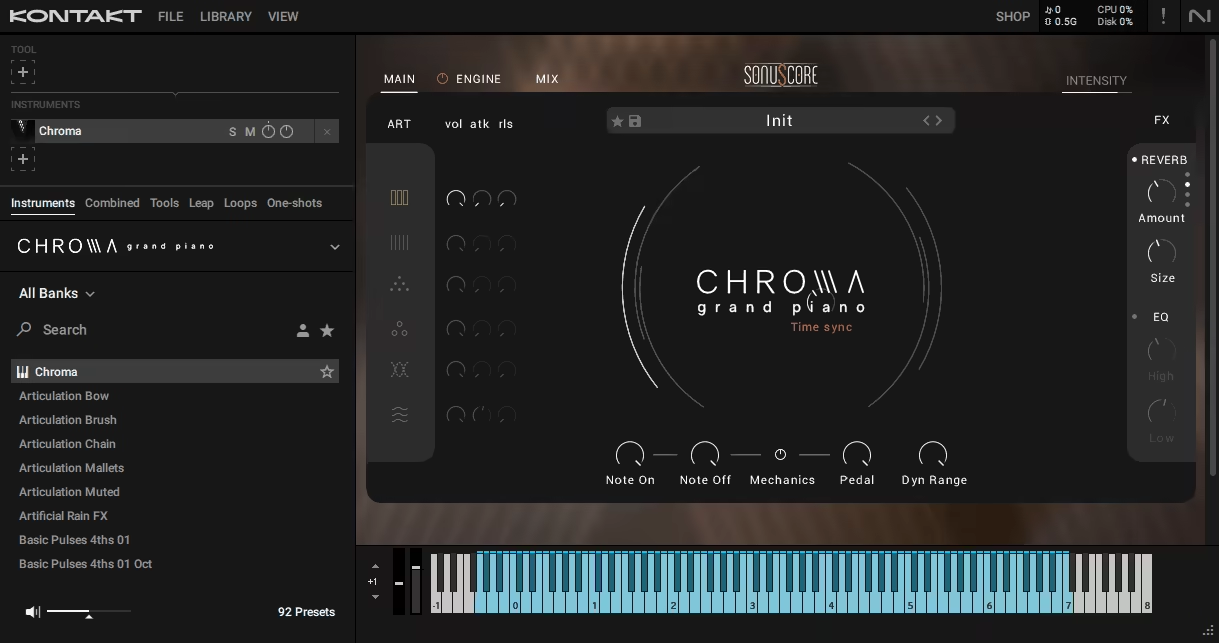
What starts as a beautifully recorded Yamaha C3 turns quickly into something else entirely: a playground of timbres, articulations, and layered textures you didn’t even know you needed.
Some pianos sound grea, but Chroma Grand Piano goes further, as it feels like it’s thinking with you. It’s more than just a “cinematic piano.” It’s a piano that wants to help write your next score.
Starting with the interface, it’s tight and welcoming with 4 tabs, zero clutter. On the Main page, you get the obvious stuff: articulation balance, FX levels, and mechanical noise.
Click over to the Engine and things get wild: density, detune, delay, and a bunch of controls that can bend a single note into a texture pad. Honestly, it’s one of the few piano libraries that pulls double duty as both a performance instrument and sound design tool.
- Multiple Articulations, Multiple Worlds
This isn’t just a piano “played a few ways.” It’s a library of playing styles with mallets, chains, palm mutes, brushes, and even e-bow. I layered mallets with traditional hammers on a slow cue and instantly had something haunting but organic. You can stack or swap articulations like layers of paint.
- The Sound Design Engine
There’s a dedicated Engine page where things get abstract in the best way. Attack and decay control how the piano breathes; octavation and sample start let you blur the line between note and texture.
It’s how I turned a soft C3 note into a shimmering background wash that sounded like ambient rain.
- Mic Control & Realistic Detail
You get 4 freely mixable mic positions, including A/B, X/Y, ORTF, and sub, which is already more flexible than most.
Plus, the adjustable Note On/Off mechanics and pedal sounds really ground the realism. I’ve used Chroma dry and close-miked for a solo piece and wide-open in a hall for a fantasy score, both felt alive.
Chroma is a real dream to play, but it’s not built for those who just want a plug-and-play upright patch.
If you’re into gritty realism or lo-fi felt tones, this might feel too pristine out of the box. And while I personally found the layout intuitive, you’ll definitely want to explore the different pages to unlock its full depth.
Chroma comes in Kontakt format for macOS and Windows users.
5. Native Instruments Noire
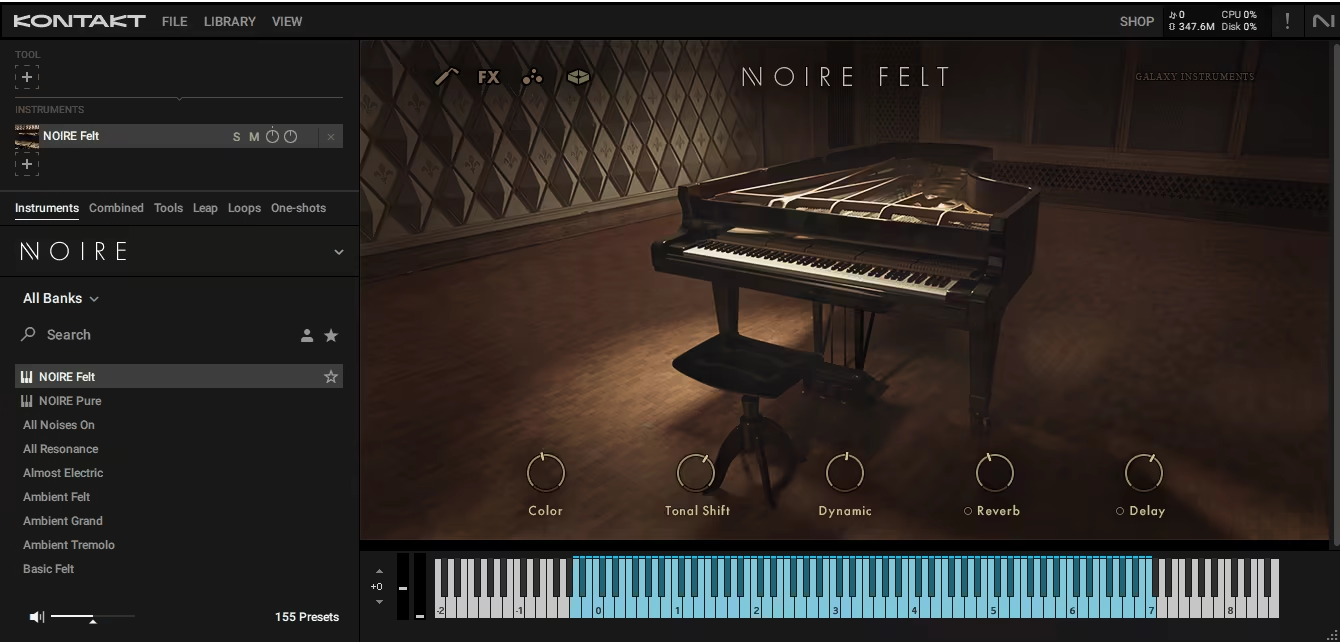
Noire doesn’t just sound good, it feels like it remembers the room it was recorded in.
With Nils Frahm’s personal Yamaha CFX at its core and the haunting acoustics of Berlin’s Funkhaus in its DNA, Noire breathes nostalgia and invention in equal measure.
Whether I lean toward the pristine or the intimate, Noire gives me both in the form of two fully fleshed-out instruments: Pure and Felt. But the real twist? It doesn’t stop at being a piano.
The layout is polished and intuitive with controls for reverb, delay, and tonal shaping live right on the main page, and deeper edits like mic noise, overtones, and pedal rumble sit just a tab away. What stands out most is how natural it feels to sculpt the sound, rather than just browse through it.
- Two Voices, One Instrument
You get both Pure (unfiltered concert grand) and Felt (muted and soft) in one package, but they’re not just EQ tweaks of the same recording.
These are entirely separate sampling sessions. I’ve used Felt on introspective piano beds and Pure for cutting through strings in a film score; the shift in character is immediate and musical.
- The Particles Engine
Calling it “MIDI-generating” doesn’t really capture the vibe. Particles listen to what you play and respond with swirling, rhythmically reactive harmonic trails.
Wİth plucked strings, mallets, and mechanical echoes, it’s like giving your piano a subconscious. I’ve layered it under sparse motifs for emotional depth and used it dry as a percussive pulse.
- Tonal Sculpting on a Micro Level
Noire doesn’t stop at pedal and release sounds, you can adjust sub-bass enhancers, attack slope, overtones, even key zone bias.
There’s also a Tonal Depth slider that gives the whole instrument this blooming, almost cinematic sustain. I turned it up halfway, and suddenly the piano felt like it had doubled in size.
This piano isn’t in a rush to wow you. At first, its sound is dry and restrained, but dig into the Style FX presets, explore the Mechanical Noise mixer, and start tweaking the Low Keys bias, and you’ll start hearing it not just as a sampled piano but as a personality.
It’s not built for punchy pop mixes or hyperrealistic live emulation. Noire thrives in composed spaces: ambient scores, introspective songwriting, gentle electronics. And while the Particles Engine steals the spotlight, the core piano sound is what keeps you coming back.
Noire comes in Kontakt format for macOS and Windows users.
6. Toontrack EZKeys 2

EZ Keys 2 is more than a piano VST; it’s a full-blown songwriting partner.
Toontrack EZKeys 2 doesn’t just sound gorgeous (which it does), it also helps you think. Whether I’m stuck on a chorus, too lazy to play in real chords, or just vibing out ideas, EZkeys 2 always has something clever to throw back at me. It’s like having a session pianist who actually gets your groove.
The interface has had a total glow-up as it’s sleek, modern, and way more intuitive now, think EZbass or EZdrummer 3 levels of polish.
The Song Track is still the heart of the plugin, and it’s cleaner and faster to work with. I especially like how I can tweak MIDI performance and chord progressions right there without bouncing between menus.
Plus, with the new Grid Editor, I can humanize, swing, and randomize notes in just a few clicks. Workflow is snappy, and the visual feedback makes a huge difference when you’re laying down ideas fast.
- Suggest Chords
This is my favorite upgrade hands down. When I’m hitting a creative wall, this thing jumps in with intelligent, genre-based chord suggestions that actually make musical sense.
It’s like musical Tinder for chords, just keep swiping until the perfect progression hits. I’ve found some wild sequences I never would’ve played on my own.
- Fazioli-based Sample Library
The core piano is buttery smooth and detailed, and miles better than the original EZkeys 1 library. It’s not trying to compete with those 100GB giants, but for 4GB? It punches way above its weight.
I use the Lo-Fi Vinyl and Film Noir presets when I want vibe, and the raw versions when I want to sculpt my own tone from scratch.
- Massive MIDI library + Replace MIDI Workflow
Over 1300 patterns come stock, and the ability to swap playing styles while keeping your chords locked in is pure gold.
I’ll start with a simple progression, then try a jazz riff or a soul groove just to see where it leads. It’s a sandbox for songwriting, perfect for quick sketching or full-blown arrangements.
If I had to nitpick, I’d say the only minor hiccup is the need to manually add time signature changes in the Song Track when your DAW already has them. It’s kind of annoying if you’re into complex prog stuff, but probably no big deal for most users.
Also, while the Bandmate feature that syncs EZkeys with EZbass and EZdrummer is super cool, it can take a bit of time to figure out your own best workflow for it. But honestly, these are small potatoes compared to everything else EZkeys 2 brings to the table.
I can honestly say this piano plugin sounds great, plays beautifully, and helps you get unstuck creatively in ways I didn’t expect.
Whether you want a solid virtual piano, a smart MIDI performer, or a songwriting collaborator that throws you fresh ideas, EZkeys 2 covers it all.
EZKes 2 comes in VST3, AU, and AAX formats for macOS and Windows users.
7. Spectrasonics Keyscape
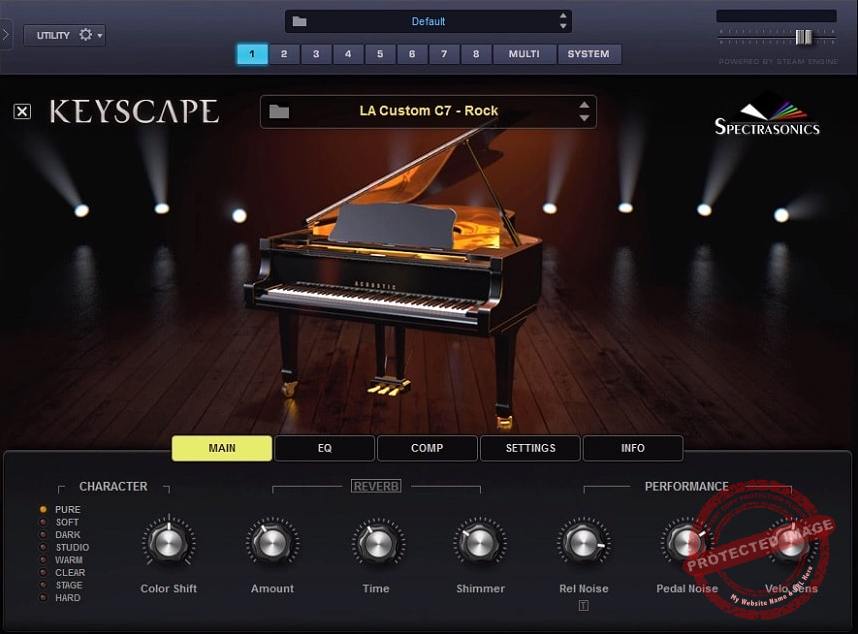
The main reason I love Keyscape is that it didn’t aim to make another generic keyboard library, as it added much more realism to the design.
Spectrasonics hunted down some of the rarest, quirkiest, and most soulful vintage keys out there, restored them, and then meticulously captured every creak, pedal thump, and release sound for Keyscape.
I’ve used a ton of piano plugins, but nothing else makes a Rhodes or Wurli feel this expressive under my fingers.
Now, let’s talk vibe and usability. Well, the interface is super clean, no bloated menus, no synth-level tweaking rabbit holes. It’s just a big, clear shot of the instrument you’re playing, a simple preset browser, and just enough knobs and tabs to sculpt the sound without slowing you down.
What I enjoy most is how quickly I can go from “scrolling” to “composing”. It doesn’t get in the way. Plus, each patch has its own Custom Controls panel tailored to that instrument, which means everything you do see is always musically useful.
- Deeply Sampled Keyboards
I’ve never seen a library that covers this much ground from lush grand pianos to toy pianos, clavs, and even oddballs like the dolceola or a ball-bearing tremolo upright.
Each one has its own quirks and sonic personality. The LA Custom C7 grand alone could’ve been a standalone plugin, but pairing that with funky electrics like the Wurlitzer 200A or clavichords? Totally great.
- Hybrid Duo presets for creative layering
Exploring the Duo patches is one of my favorites here, as they blend two instruments into a totally new hybrid sound. You get a mix knob to balance them, and while I wish I could create my own pairings, the included ones are honestly amazing.
For instance, a Celeste and an Electric Piano blend or a Clavichord and a Harpsichord Baroque with attitude. It’s inspiring stuff that’s great for getting out of writer’s block.
- Tailored effects and performance controls for each patch
Instead of giving you a kitchen sink of tweakables, Keyscape offers Custom Controls that actually make sense for each sound. You’ll find stuff like pedal noise, release time, amp modeling, character EQs, tape-style compression, or stereo width knobs, depending on the patch.
There are a few quirks, like the loading times for some patches can be a bit slow, especially on older systems, but the “Preview Ready” feature helps you play quickly while the rest loads in the background.
Overall, Keyscape just sounds rich, textured, and playable that I keep reaching for it, even when I don’t need a piano.
It’s ideal for cinematic scoring, lo-fi vibes, ballads, jazzy hip-hop, ambient… pretty much anything that benefits from real character.
Keyscape comes in VST, AU, AAX, and standalone formats for macOS and Windows users.
8. Native Instruments Piano Colors
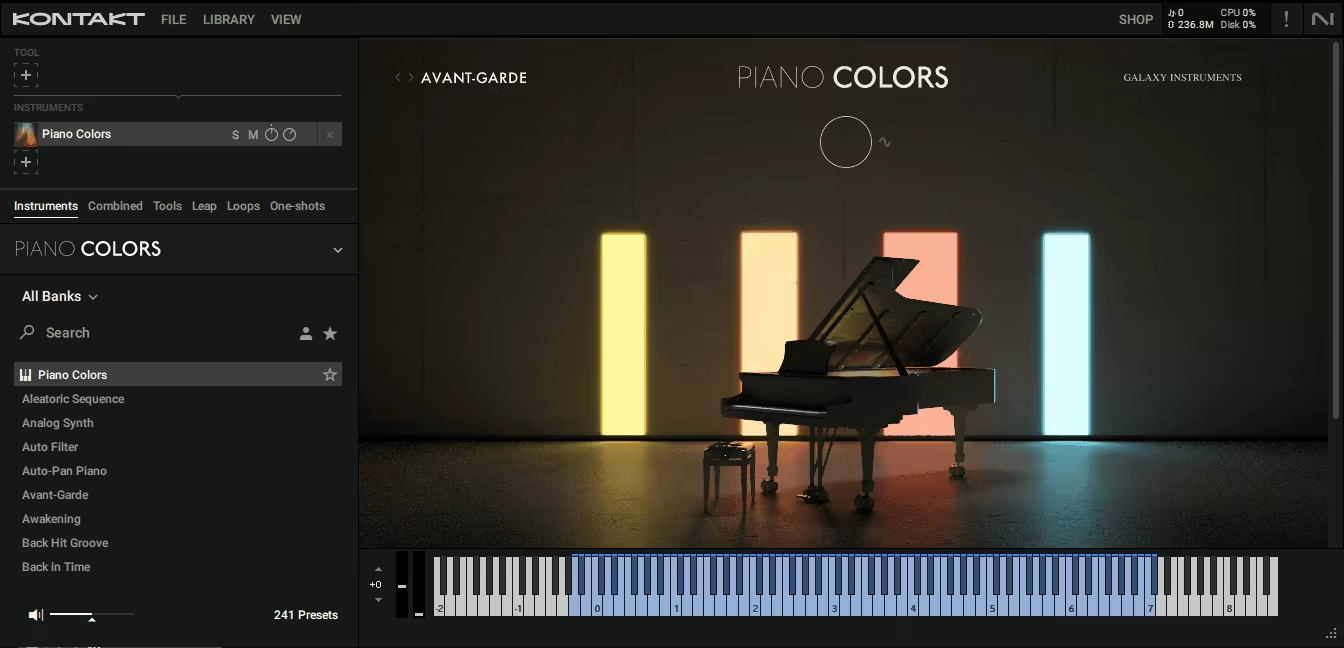
Piano Colors turns the idea of a piano on its head cause instead of giving you the same old concert grand with pretty reverb, it hands you a twisted, experimental sonic laboratory.
Well, this one isn’t about realism, it’s about possibility. I’ve used it for ambient soundbeds, rhythmic textures, even eerie cinematic moments, cause it sparks some strange, wonderful idea I never saw coming.
The Piano Colors interface is sleek and modern, with a kind of artsy-futuristic vibe. You get this animated concrete room with colorful lights that actually move in sync with your mod wheel, which is super useful for seeing modulation in action.
What I enjoy most is the way each sound is built from four modules such as Noises, Layer I, Layer II, and Particles. They’re all accessible and easy to tweak, but deep enough to make the nerdiest of sound designers happy.
- Layer I and II
At the heart of Piano Colors are Layer I and Layer II, which let you blend radically different articulations, like a brushed resonance with a bowed shimmer.
I love creating hybrid textures, like pairing a staccato felt note with a slow-building pad underneath. It’s incredibly easy to dial in something fresh that doesn’t sound like any piano you’ve ever heard.
- Particles Engine
For me, this is where the magic happens. Particles is kind of like an AI-driven arpeggiator on steroids. It adds these randomized, rhythmically intelligent movements on top of your layered sounds.
I tried it to make evolving pulses that sit perfectly behind a vocal, or add subtle rhythmic texture to a scoring cue. You can even control its own filters, reverb, and tonal shift, without touching your DAW automation.
- Noises Module
The Noises module is another unique point. I’m talking pedal thumps, mechanical creaks, felt swishes, even ambient mic hiss, each controllable individually.
I really enjoyed this level of detail, especially when I’m aiming for intimacy or realism. But it’s just as fun to crank them for a gritty, ASMR-style effect. Bonus: there’s even a “Pianist” slider for seat squeaks and clothes rustling!
That said, there are a few things to note. Some of the more layered or animated presets can be pretty CPU-heavy. On my older laptop, I had to freeze tracks in Logic to avoid glitches. And while the sound design is deep, beginners might feel overwhelmed at first.
Still, Piano Colors has quickly become one of my go-to tools for anything moody, experimental, or just plain weird.
Piano Colors comes in VST, AU, and AAX formats for macOS and Windows users.
9. MeldaProduction MeldwayGrand
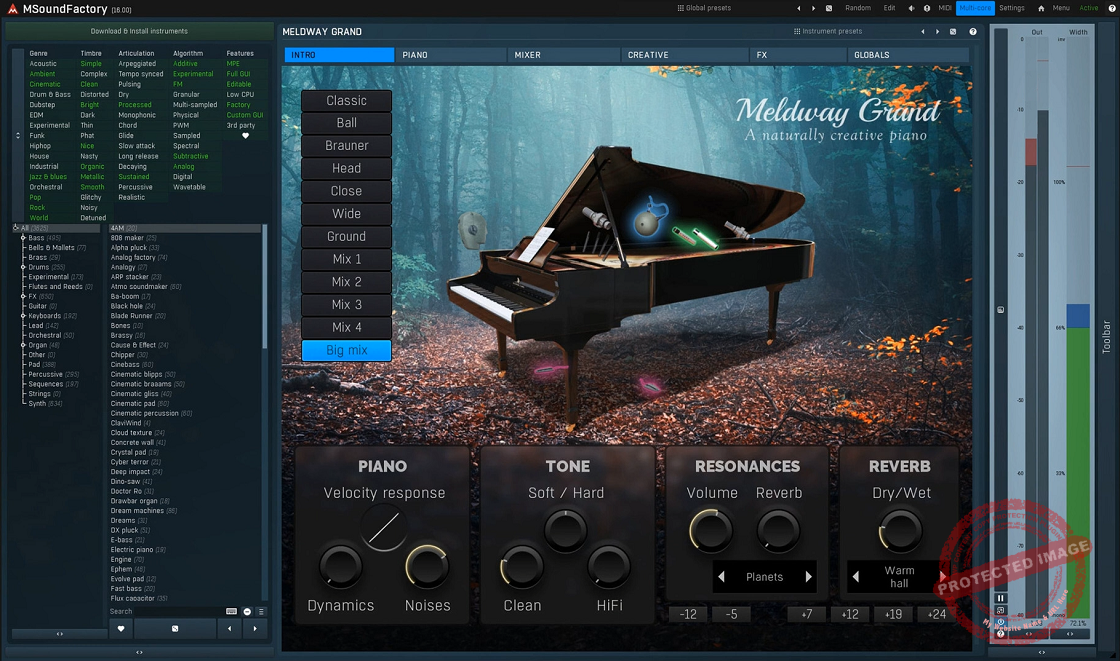
What I really love about MeldwayGrand is that it doesn’t just give you a pristine Steinway D sample; it gives you a canvas to shape your own piano universe.
MeldwayGrand is one of the rare plugins that’s as emotionally expressive as it is technically deep, and I’ve found myself reaching for it way more often than I expected.
The interface is clean but powerful, and navigating through mic blends, resonance settings, or the totally wild Creative tab is surprisingly easy. Everything’s laid out logically, but you can dig in as deep as you want.
- 7 Stereo Microphone Pairs
This was the first thing that made my ears perk up. I’m talking everything from ultra-close mics for that punchy pop sound to experimental ground mics and Brauner setups with insanely wide imaging.
I’ve mixed head and ball mics for a cinematic feel that felt too good to be coming from software.
- Sympathetic Resonances and Pedal Behavior
What really stood out to me is how detailed the pedal interactions are. You can simulate half-pedaling, add resonance even without a pedal down, and get those subtle overtones blooming just right. It’s expressive in ways that I usually only get from hardware or high-end sample libraries.
- Creative Sound Design Section
This tab is where things get weird, in the best way. I’ve dialed in FM-processed keys, added filters, swapped effect chains, and even hit the random button just to see what happens. It’s like the piano turns into a synth for a minute, and I’m here for it.
- 25 Custom Reverbs and Full FX Suite
I didn’t think I needed 25 reverbs for a piano, but now I kinda do. There’s also delay, compression, enhancement tools, and more experimental ones like distortion, bellizer, and rotary. It’s great if you’re trying to get something more hybrid or atmospheric.
In the end, MeldwayGrand is a stunning virtual Steinway D with super flexibility. MeldwayGrand is both a purist’s dream and a sound designer’s playground, easily earning a spot as my go-to piano for everything from scoring to sound design.
MeldwayGrand comes in VST, VST3, AU, and AAX formats for macOS and Windows users.
Last Words
After spending serious time with all these piano plugins and Kontakt libraries, I can say each one nails something pretty unique.
Some focus on ultra-realistic sounds that capture every nuance, while others push creative boundaries with unique textures and expressive features.
I love how these tools open up new creative paths. Sometimes you just want that perfect, authentic tone; other times, you want to break the rules and sculpt unheard sounds. Whichever vibe you chase, these picks will make sure your piano parts don’t just sit in the mix; they truly own it!
Choose your weapon here and happy music making!
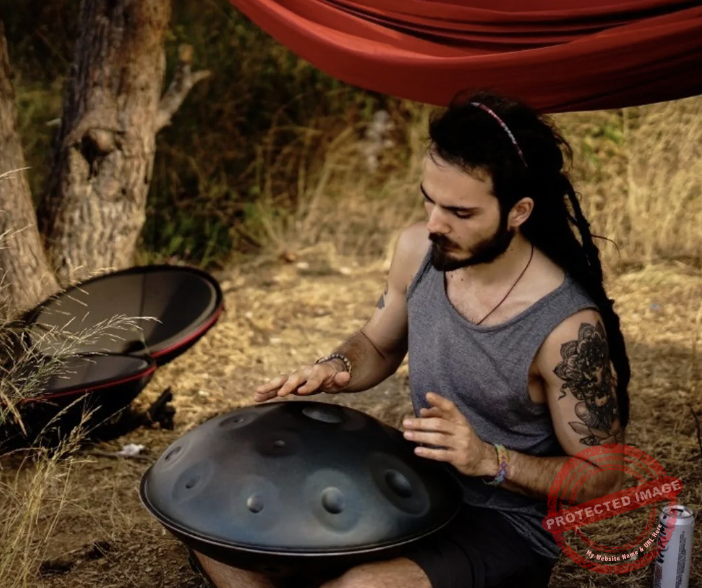
Berk Öztuna, a musician from Istanbul, is skilled in handpan, percussion, and guitar, performing and recording his own compositions globally. With expertise in music production and audio technology, he integrates virtual instruments and sound design tools seamlessly into his work. He also writes insightful articles on music production and gear for platforms like Plugin Noise and shares his music on Spotify and Instagram.
DONATE: Love our content? Help us keep Plugin Noise alive in the age of AI — Your donation fuels better content for music creators like you! You can donate here: pluginoise@gmail.com (Every amount counts.)
